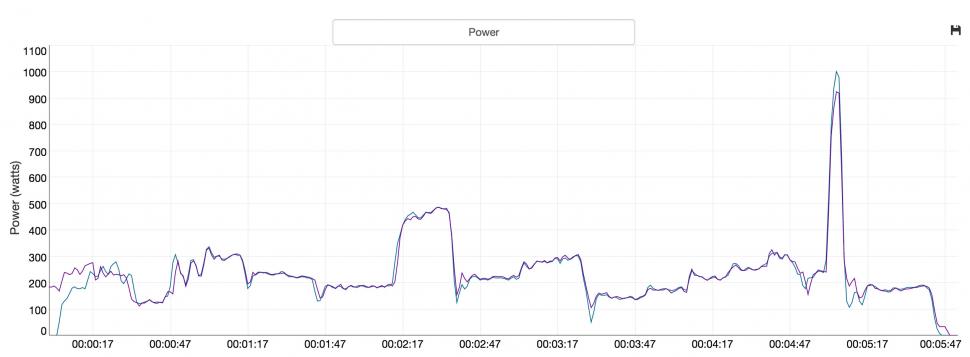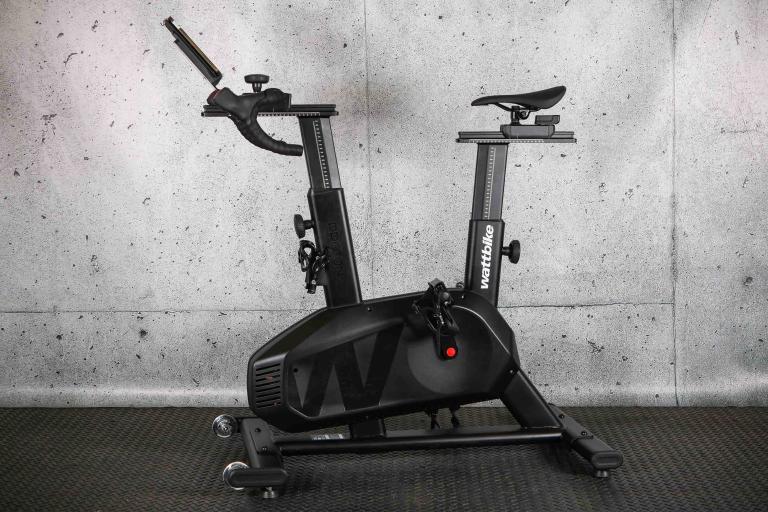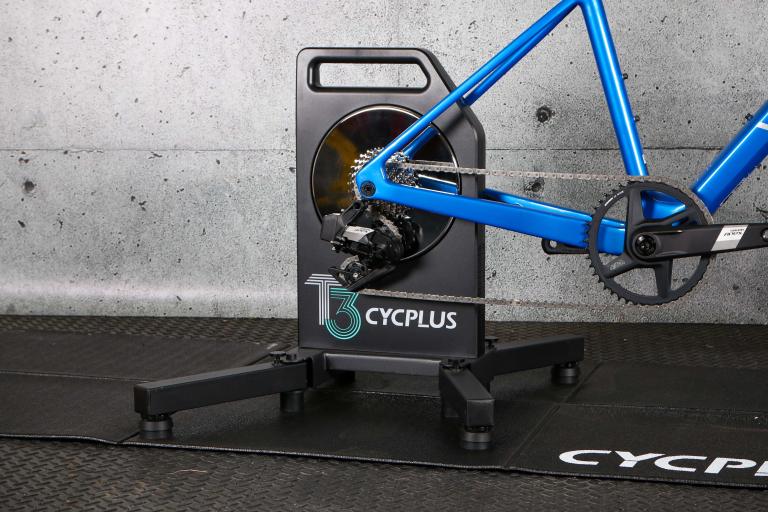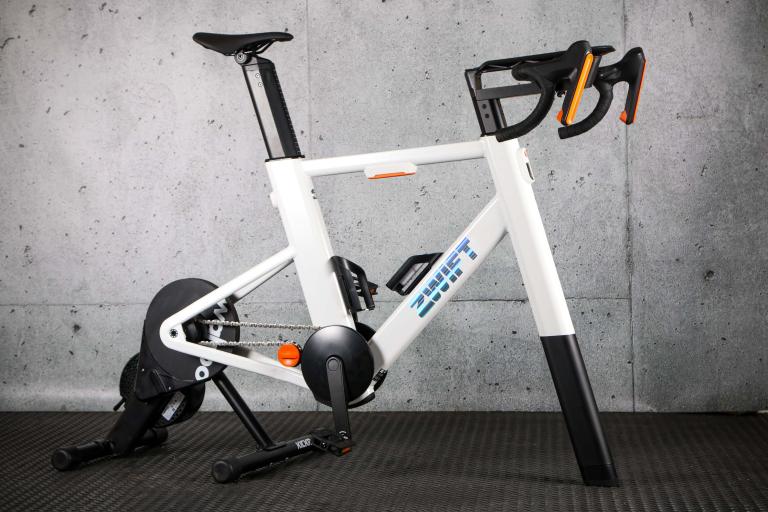- News
- Reviews
- Bikes
- Accessories
- Accessories - misc
- Computer mounts
- Bags
- Bar ends
- Bike bags & cases
- Bottle cages
- Bottles
- Cameras
- Car racks
- Child seats
- Computers
- Glasses
- GPS units
- Helmets
- Lights - front
- Lights - rear
- Lights - sets
- Locks
- Mirrors
- Mudguards
- Racks
- Pumps & CO2 inflators
- Puncture kits
- Reflectives
- Smart watches
- Stands and racks
- Trailers
- Clothing
- Components
- Bar tape & grips
- Bottom brackets
- Brake & gear cables
- Brake & STI levers
- Brake pads & spares
- Brakes
- Cassettes & freewheels
- Chains
- Chainsets & chainrings
- Derailleurs - front
- Derailleurs - rear
- Forks
- Gear levers & shifters
- Groupsets
- Handlebars & extensions
- Headsets
- Hubs
- Inner tubes
- Pedals
- Quick releases & skewers
- Saddles
- Seatposts
- Stems
- Wheels
- Tyres
- Health, fitness and nutrition
- Tools and workshop
- Miscellaneous
- Tubeless valves
- Buyers Guides
- Features
- Forum
- Recommends
- Podcast
review
£1,000.00
VERDICT:
The next generation CycleOps smart trainer improves on an already excellent platform
Weight:
21,300g
Contact:
At road.cc every product is thoroughly tested for as long as it takes to get a proper insight into how well it works. Our reviewers are experienced cyclists that we trust to be objective. While we strive to ensure that opinions expressed are backed up by facts, reviews are by their nature an informed opinion, not a definitive verdict. We don't intentionally try to break anything (except locks) but we do try to look for weak points in any design. The overall score is not just an average of the other scores: it reflects both a product's function and value – with value determined by how a product compares with items of similar spec, quality, and price.
What the road.cc scores meanGood scores are more common than bad, because fortunately good products are more common than bad.
- Exceptional
- Excellent
- Very Good
- Good
- Quite good
- Average
- Not so good
- Poor
- Bad
- Appalling
The H2 is the next generation of the CycleOps Hammer trainer, which was an excellent unit for training and virtual riding. The H2 adds cadence, takes away noise and improves power accuracy; it's an incremental improvement, but it's certainly better and a solid option for those who take indoor riding seriously.
- Pros: Good build quality, accurate power measurement, quiet
- Cons: Cadence dropouts
Build quality: good; adaptable for all bikes
The physical unit isn't meaningfully changed from the original Hammer in terms of its shape and size, although it's been given a new, stealthier finish that's certainly an improvement. At 21kg it's certainly a lump of a thing but when the legs are stowed away and the front wheel tray stored underneath it doesn't take up masses of space, so it's an option if you don't have room to leave your trainer set up all the time. The carry handle makes it pretty easy to move about, considering its heft.
The H2 will take pretty much any modern bike; there are 130mm and 135mm quick release endcaps, as well as 142mm and 148mm thru-axle sleeves. The trainer comes shipped with an 11-speed HG-spline freehub, with an XD freehub a cost option. If you want to fit a 10-speed Campagnolo cassette you'll need to find one with Campag spacing and Shimano splines; they're available online.
Setting the H2 up is simple: fit the cassette, unfurl the legs, fit the bike in place and off you go. First time out of the box it takes about a quarter of an hour; after that you can have the bike off and the legs folded away in a couple of minutes. The feet are adjustable for uneven floors, and the 500mm width of the legs gives plenty of stability even when you're out of the saddle.
Connectivity: ANT+ and Bluetooth both covered
The H2 has both ANT+ FE-C and Bluetooth connectivity, like its predecessor. The green flashing status LED turns white when you're connected to ANT+, and blue when you're paired via Bluetooth. Both work fine; I've used the H2 with TrainerRoad and Rouvy on Bluetooth, and Zwift and TrainerRoad on ANT+, without any issues.
ANT+ is very slightly more reliable in my experience, especially if you run a USB extension cable from your computer and place the ANT+ dongle as close to the trainer as you can. The H2 doesn't come with an ANT+ dongle so if you're using a desktop computer you'll need to get one; they can be had for as little as £11 online. Firmware updates are over-the-air using Bluetooth; the Hammer firmware is well established now and there weren't any updates to apply during testing.
Power measurement: very accurate in normal working range
When we tested the original Hammer we found the power to be very accurate, and that hasn't changed. As an example, here's a plot of a free ride in TrainerRoad on the H2, with my Garmin Vector 2 pedals sending their power data to Zwift. Both had been recently calibrated. The H2 is the blue line, and the pedals are purple. There's about five minutes of data here, over a range of power levels.
As you can see there's a slight discrepancy at the start as the H2 works itself up to speed (it was already warmed up) but after that you'd barely get a fag paper between the two lines most of the time. The only exceptions are coming off a harder effort, where the trainer tends to under-report slightly against the pedals, and in a full-on sprint, where it over-reported a bit. The rest of the time they were generally within a few watts of each other. CycleOps claims an accuracy of +/-2%, which is more accurate than the original Hammer, and I don't doubt that it delivers on that.
Below is a high-intensity reps session, working at around 480W for 15-second intervals with recoveries at about 130W. The H2 graph looks a little smoother than the pedal data – the peaks aren't as big, and it doesn't drop back as much in the valleys, but overall it tracks very closely.
There's more of a discrepancy at low power. Below is a graph of my warm-down from that interval session, and where the H2 is registering around 90W the pedals are some way below that, nearer 60W. Obviously this is a pretty big percentage difference, but it's not like I'm doing meaningful work here, just spinning the pedals. When it matters – in the meat of a session – the numbers look very good. To be honest, I'm not sure whether this discrepancy is more the pedals under-reporting, or the other way round.
Cadence sensing: good most of the time, but could be improved
The Hammer didn't have a cadence sensor to begin with but it was added in a firmware update last year and the H2 implementation sounds like it's basically the same, using an algoithm to sense changes in your power signature that come from turning the pedals. If you're working above a certain level, it works fine as the ebb and flow of power is more obvious. If you're not working hard enough for your pedalling to be consistent – for me that was below about 50% of my FTP, or 160W – then it's less good at guessing how quick your legs are going round, and sometimes it doesn't seem to bother trying, which can make for the odd moment in Zwift where you're still cruising under power but without apparently turning the pedals. It's a useful addition, anyway, even if it's not perfect. It's interesting that the Tacx Neo 2 has now moved to passive sensing to give more accurate cadence and more pedal analysis; that's moved the game on a bit.
> Buyer's Guide: 16 of the best turbo trainers and rollers
Below is a graph of the cadence as measured on the H2, compared to the Vector 2 pedals. This is a warm-up, followed by a low-intensity period, then high-intensity intervals with low-intensity recovery in between. You can see that the cadence from the H2 is especially likely to drop in the low-intensity periods, and most of all when you're moving from high- to low-intensity work. But mostly it's pretty good.
Interactive mode: one of the best
If you're using Zwift then a smart trainer makes the whole experience a lot more engaging. The most important thing about the smart control is that it's quick and accurate in its responses, so that when the road heads up you can feel the resistance increasing. If there's any disconnect between the two, it can make for a disconcerting feel, especially on that bit at the back of Watopia's hilly loop that's all short kicks and sharp turns. It's safe to say that the H2 is comfortably in the top flight here. Responses to gradient changes are more or less instantaneous, and the trainer never feels like it's lagging behind. The H2 is capable of 2,000W of resistance and a simulated 20% gradient, so there's nothing in Zwift (or in my legs) that's likely to outfox it. The 9kg flywheel keeps enough momentum that changes in gradient don't feel choppy, and winding the bike up for a sprint has a natural feel too. The only trick that the H2 misses is the ability to mimic surface conditions, which the Tacx Neo has in its arsenal. Other than that, it's top marks.
ERG mode: very stable
If you're using a workout-based approach to training, then ERG mode allows you to just pedal the trainer and let it take care of the increases and decreases in power. All you have to do is get to the end. It's great with TrainerRoad, especially now the FTP is a ramp test that you can also complete in ERG mode; before it was a 20-minute (or two time eight-minute) effort that you had to switch to standard resistance mode for. The same goes for workouts in Zwift: letting the trainer make the adjustments gives you one less thing to think about.
Anyway, ERG mode on the H2 is very effective. The resistance changes are quick enough that even very short efforts (5-15 seconds) map the power targets of TrainerRoad pretty well. The big flywheel helps to keep everything feeling smooth, and makes it a bit easier to keep on top of your cadence. Changes in cadence are handled very well, so if you're in the middle of an interval putting out 300W at 90rpm and you want to stand up to relieve the pressure on your, well, you know, then dropping to 65rpm triggers a pretty immediate change in resistance from the trainer. You can see the power drop on the trace but it's only a couple of seconds before it picks back up again. Getting back up to a higher cadence is a bit tougher as it involves going above your target power. But again, not for long, and it's comparable to other high-end trainers here.
Headless mode: you're not likely to want it, but it's there
If you turn on the H2 but don't pair it to any apps then you get a progressive resistance curve that's mapped to to the CycleOps Fluid 2 trainer. So it's possible to get on and do a session without using any of the pairing features. It's hard to imagine a situation – short of your phone and laptop simultaneously dying and you absolutely having to complete a turbo session – where you'd want to, though.
Noise: not much
'Quiet enough to ride in a library' is CycleOps' claim here, with a claimed 64db of noise at 20mph. What with the fan on maximum, and the drum and bass banging in the headphones, the noise from the H2 is the least of my worries really. When I turn those things off, it's true that the H2 really is very quiet. The drivetrain of the bike I've attached to it probably makes more noise.
More than the actual noise level, the vibration level is extremely low. CycleOps makes a big thing of the fact that the flywheel is precision balanced, and it really is. If you're riding in an upstairs room, or in an apartment, or on a sprung wooden floor, the vibration is the bigger issue. And with the H2 there's barely any.
Overall: an improvement over the Hammer, which was already excellent
A grand is a lot of money to be spending on a trainer, so you'll be wanting it to be very good indeed. And the H2 is. I couldn't really distinguish between the feel of the new model and the old one, but it's quieter, the power accuracy has been improved and cadence sensing works okay, meaning you don't need to add any external sensors except a heart rate monitor. If you're serious about your indoor riding then this is a serious piece of kit that works very effectively with the major training apps on desktop, tablet and mobile. The list is already pretty short if you want a smart trainer and you have a budget of £1k, but the H2 is certainly worthy of a place near the top.
Verdict
The next generation CycleOps smart trainer improves on an already excellent platform
road.cc test report
Make and model: CycleOps H2 Smart Trainer
Size tested: One
Tell us what the product is for and who it's aimed at. What do the manufacturers say about it? How does that compare to your own feelings about it?
Cycleops says:
A SMART TRAINER FOR ALL RIDER TYPES
No matter your training category, the H2 is the perfect addition to any athlete's toolbox. From weekend warriors to pro-podium chasers, mountain bikers to triathletes, this smart direct drive trainer is versatile enough to push any training regimen to the edge.
The heart of the H2 is its ability to replicate real world inertia better than anyone else thanks to it its massive, 20-pound precision-balanced flywheel. The H2's soul is its impressive electrical prowess, complete with integrated cadence, speed and power data, internal cooling, over-the-air firmware updates, dual-band ANT+ and Bluetooth compatibility and topped off with its electromagnetic resistance system for rapid resistance changes within virtual training environments. Plus, at 64 decibels the H2 is library-level quiet - even if your next virtual victory may not be.
PowerTuned using PowerTap technology for up to +/- 2% accurate power readings.
Electromagnetic resistance provides a precise and controlled workout every time.
Direct drive design features widest bike compatibility and quiet performance.
Integrated cadence, speed and power data – no external sensors needed.
Seamlessly connects to virtual training apps with dual ANT+ FE-C and Bluetooth standards.
Zwift certified.
Cassette not included.
Tell us some more about the technical aspects of the product?
Noise level at 20 mph is 64 decibels, quiet enough to ride in a library.
PowerTuned using PowerTap technology for up to +/- 2% accurate power readings.
Thru-axle compatible for bike frames with fork widths of 142 or 148.
Quick-release compatible for bike frames with fork widths of 130mm and 135 mm.
Integrated dual ANT+ FE-C and Bluetooth standards.
Compatible with a wide variety of devices and virtual training application, including Rouvy, Zwift, TrainerRoad and many more. Contact us with questions about compatibility with other software.
20 lb precision balanced flywheel provides quiet, vibration free and true-to-the-road riding experience.
Fast response electromagnetic resistance ensures most responsive resistance and maximum power available.
Robust design is capable of handling up to 2000 watts at 20 mph and can simulate up to a 20% climbing grade.
Headless mode (powered on, not paired to any apps) lets you ride with a progressive resistance curve that matches the Fluid2.
Internally integrated speed, cadence and power data eliminates the need for extra external sensors.
LED indicator lights communicate connectivity and more.
Direct drive design directly connects the bicycle to the resistance unit, eliminating tire wear.
Integrated front wheel tray adds stability to ride without taking up any extra storage space.
Internal cooling technology ensures accurate ride data even during the hardest of workouts.
Built-in front wheel tray adds stability to ride and nests within the trainer when not in use.
Folding legs provide widest footprint of direct drive indoor bicycle trainers on the market for added stability and easy storage.
Includes a Shimano splined freehub for compatibility with Shimano 8-11 speed cassettes. XD freehubs are also available and sold separately.
Accessible and balanced handle allows for smooth, anyone-can-carry transit of the trainer.
Over the air (OTA) firmware updates via Bluetooth ensures the H2 is up to date with all the latest features.
All of our trainers are tested to the combined weight (rider and bike) of 300 lbs.
Dimensions when Open L*H*W: 31' x 18.5' x 19.5' (787.4 x 469.9 x 495.3 mm).
Dimensions when Closed L*H*W: 8.5' x 18.5' x 19.5' (76.2 x 469.9 x 495.3 mm).
Weighs in at 47 lb. (21.3 kg).
ANT+ and BlueGiga USB dongles sold separately.
Cassette not included.
Rate the product for quality of construction:
9/10
Rate the product for performance:
9/10
Only cadence sensing really lets it down.
Rate the product for durability:
9/10
Rate the product for weight (if applicable)
8/10
Heavy is good, right?
Rate the product for value:
7/10
Not cheap, but not bad value either.
Tell us how the product performed overall when used for its designed purpose
Very well: an excellent indoor trainer.
Tell us what you particularly liked about the product
Stable, quiet, easy to use, good resistance, accurate power.
Tell us what you particularly disliked about the product
Cadence sensing dropouts, documentation a bit minimal.
How does the price compare to that of similar products in the market, including ones recently tested on road.cc?
The same as the Wahoo Kickr, its direct competitor.
Did you enjoy using the product? Yes
Would you consider buying the product? Yes
Would you recommend the product to a friend? Yes
Use this box to explain your overall score
Excellent indoor trainer that's quiet and accurate. If you have the money it's worth the spend.
About the tester
Age: 45
I usually ride: whatever I'm testing... My best bike is: Kinesis Tripster ATR, Merida Scultura
I've been riding for: Over 20 years I ride: Every day I would class myself as: Experienced
I regularly do the following types of riding: road racing, time trialling, cyclo cross, commuting, touring, club rides, sportives, general fitness riding, fixed/singlespeed, mountain biking, Mountain Bike Bog Snorkelling, track
Dave is a founding father of road.cc, having previously worked on Cycling Plus and What Mountain Bike magazines back in the day. He also writes about e-bikes for our sister publication ebiketips. He's won three mountain bike bog snorkelling World Championships, and races at the back of the third cats.




















[Snip]...
Thanks for the info. V disappointing this. I would have thought if the cyclist defence fund is for anything it is for cases like this. I left...
Another new place recently discovered is Wingfield Station cafe (no longer a station) in Derbyshire. ( Holm Lane South Wingfield, Holme Ln, South...
One for shopping list. Need a new rear light. Varia and Magicshine have been the two options, this makes it 3....
Another vote for Mercian here. They did a frame for me years ago. Superb job. ...
I'll stick to Sainsburys own brand jelly beans thanks.
I would appreciate some advice....
Wow, I like the look of this. I'm an old fogey and I like steel as a material. This looks right. The price isn't outrageous either.
Your comment is very poor. There was nothing wrong with my comment.
Im not at all happy with these. I have them in 34. The issue is that the rubber is sufficiently soft, tacky (and presumably therefore grippy) that...